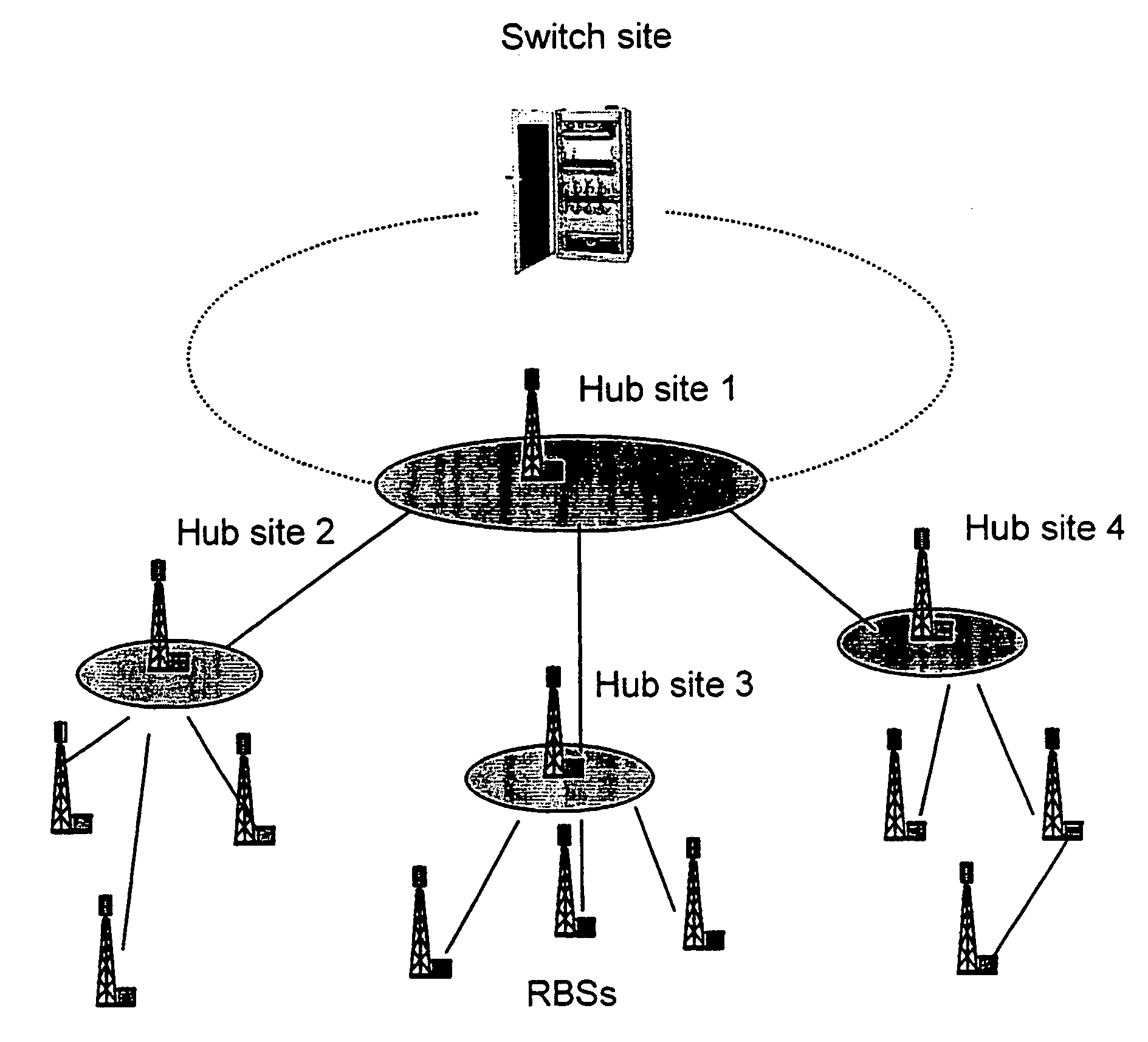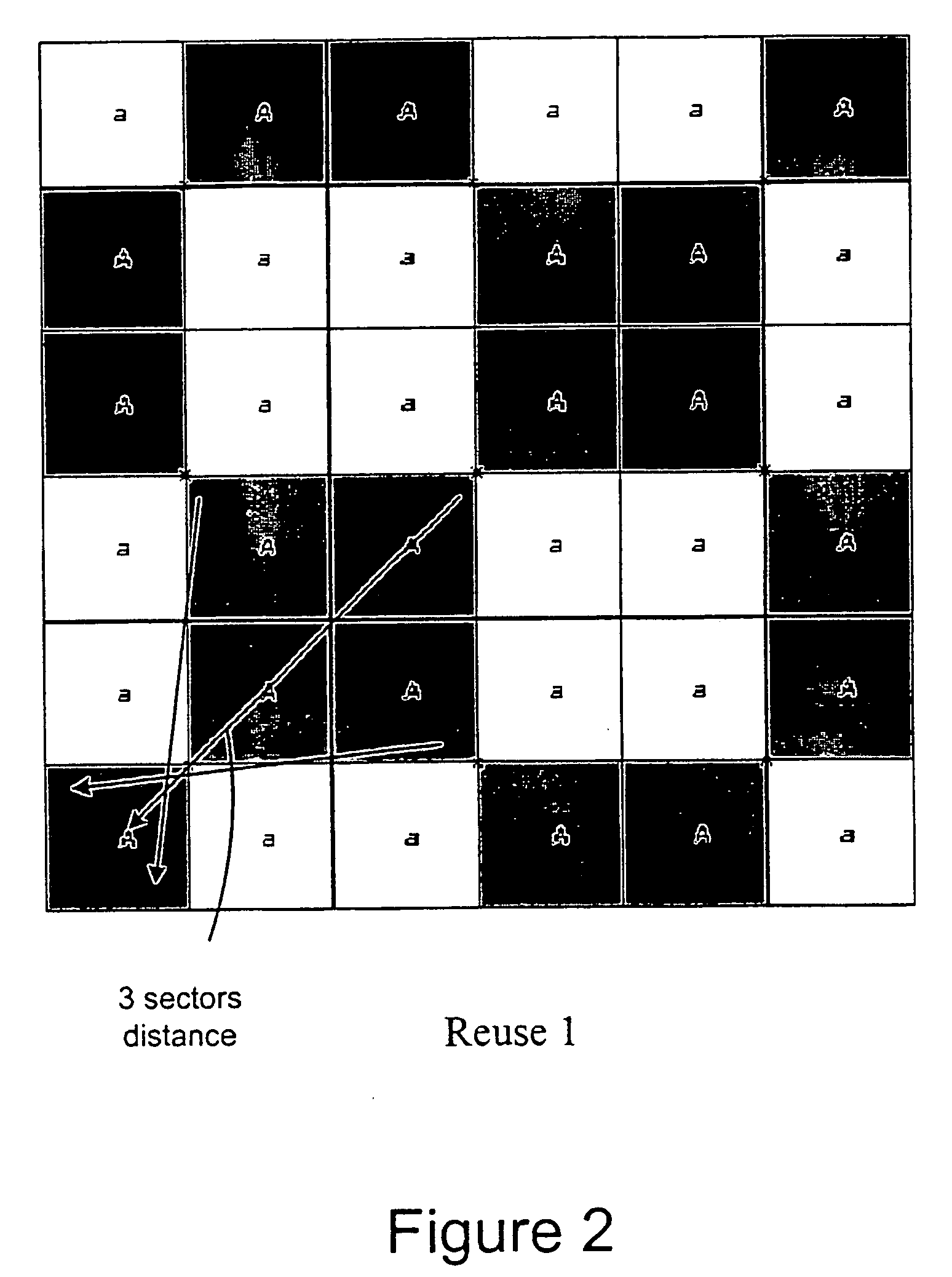Optimisation mechanism for frequency reuse
a frequency reuse and frequency optimisation technology, applied in the field of mobile telecommunication networks, can solve the problems of reducing network quality, inflexible expansion, and relative slow deployment of installing lines, and achieve the effects of minimizing quality degradation, reducing interference, and optimizing system quality
- Summary
- Abstract
- Description
- Claims
- Application Information
AI Technical Summary
Benefits of technology
Problems solved by technology
Method used
Image
Examples
Embodiment Construction
1. Scope
[0015] In an embodiment of the present invention there is provided a mechanism for the optimisation of the frequency reuse, for mobile network infrastructure and business access applications, by means of combined use of microwave point-to-point links and point-to-multipoint, Broadband Wireless Access Systems or Local Multipoint Distribution Systems (LMDS), for example. Deployment of LMDS is particularly attractive since LMDS networks can be rolled out very quickly, offering customers service in a matter of days and weeks, compared with the relatively long time to deploy fibre networks, for example.
[0016]FIG. 1 shows an example of the access network for a mobile network application. The end Radio Base Stations (RBSs) can be connected to the Switch site by a combination of fibre optics, leased lines or microwave links. This last technology has been the preferred one both for economical and speed of deployment reasons. Furthermore, FIG. 1 shows how traffic from several end s...
PUM
 Login to View More
Login to View More Abstract
Description
Claims
Application Information
 Login to View More
Login to View More - R&D
- Intellectual Property
- Life Sciences
- Materials
- Tech Scout
- Unparalleled Data Quality
- Higher Quality Content
- 60% Fewer Hallucinations
Browse by: Latest US Patents, China's latest patents, Technical Efficacy Thesaurus, Application Domain, Technology Topic, Popular Technical Reports.
© 2025 PatSnap. All rights reserved.Legal|Privacy policy|Modern Slavery Act Transparency Statement|Sitemap|About US| Contact US: help@patsnap.com



